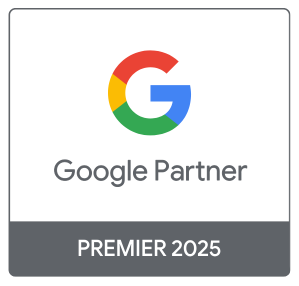If you want your senior living community to be found in today’s digital world, you’ve got to rank for online search results. Search engines are the driving force for most of your website traffic. So how can you maximize your ranking online?
It’s all about creating a trustworthy brand and website that has value in the eyes of Google. The process of improving your digital presence and website is called search engine optimization (SEO).
Here are 10 steps to improve your SEO strategy that will help your senior living community rank higher on search engine results pages (SERPs).
CITIZEN is a group of digital marketing specialists who work exclusively with senior living communities. If you’re looking for more information about improving your SEO or want to experience a free demo, just get a hold of our team for some helpful advice.
Step 1: Give Each Page Its Own Identity
Create specialized landing pages for each service you provide in your community, and break it down into separate web pages. Don’t just have one page that lists all the lifestyle options you offer. Create a unique landing page with content specific to each level of care. If you do this, Google will be able to determine what each page is about and rank it more appropriately.
For instance, you should have separate pages for respite care, memory care, and independent living if you offer all of these types of residency.
Every page of your website should:
- Use structured data (code that search engines are familiar with and find easy to read).
- Ensure that the title, URL & description are accurate and include keywords.
- Be designed for PEOPLE to read and navigate, first and foremost.
- Incorporate local elements that target your regional market.
- Have clearly defined page titles (ie. “Memory Care in Phoenix, AZ”).
Your Web Page Metas Matter
The text you see when websites are displayed on search engine results pages (SERPs) is called the meta title and meta description. Meta title and description tags are the components of a web page that tell search engines what the page is about. Think of it as a book or chapter title.
These are essential for SEO and influence whether or not your site will appear in a given search result.
Use the following best practices when creating your page titles and meta descriptions:
- The title should be between 55 and 65 characters long.
- The meta description should be between 150 and 160 characters long.
- Use keywords where possible, without being too spammy.
- Be sure to write for humans, not a search engine.
Step 2: Make Sure Your Content is Meaningful
People want to read meaningful material that they find helpful. Web pages are judged based on their relevance to a search query by Google and other search engines. Keywords alone on a web page aren’t enough—the material and context must be interesting and purposeful!
Always concentrate on creating relevant, high-quality content. Avoid content that is all “fluff” or has no real value to the topic of the web page.
Skyscraper content is your best-performing content. These pages or sections of a page should be highlighted, emphasized, updated, and promoted the most.
Here are some guidelines for creating meaningful senior living community content:
- Answer targeted search queries with compelling content.
- Add location tags and regionally relevant information.
- Make sure your content is original and unique.
- Avoid thin content and duplicate content.
- Invest in long-form content like blogs and eGuides.

User Experience is The First Priority
A positive user experience (UX) improves click-through rates (more engagement on your site) and reduces bounce rates (people leaving your site), keeping visitors on your site longer. This is an essential component of SEO growth. Optimized UX improves your search rank by making it easier for people to discover the content they want in user-friendly ways.
Some best practices for improving your website’s UX include:
- Use engaging visuals.
- Make sure pages load quickly.
- Create mobile-friendly websites.
- Optimize for voice.
Step 3: Provide Free Valuable Info for Seniors & Their Families
Free information for your residents, prospective residents, and their families is a great way to earn trust in your company. Providing real advice is one of the most effective methods to boost confidence in your business. Newsletters, blogs, and eGuides are all useful tools for people considering senior living.
This not only increases downloads and social media shares but also shows you’re an expert in assisted living and senior lifestyles.
Make sure your free resources and information are meaningful. These pieces of content should always:
- Include share-worthy material that earns links, citations, and amplification.
- Add value to your website.
- Be easy to share across all platforms.
Step 4: Claim Your Online Local Business Listings
Using local online directories is an excellent way to raise the visibility of your senior living community. These are like phone book listings in the digital age. Claim listings on Google Business Profile (formerly Google My Business), Yelp, Yahoo! Local, Bing, and other platforms available in your region.
It’s a great idea to have other businesses link to your website because it increases your connectivity. But make sure these directories are reputable. Your directory listings should always include the following:
- Your community’s name
- Address
- Phone number
- Website URL
- Email address

Step 5: Your Website Must Be Mobile-Friendly
These days, more than 60% of online searches are done using a mobile browser. This is why your senior living website must be mobile-friendly. Visitors will quickly leave your site if it isn’t mobile-friendly and takes too long to load (more than 3 seconds per page).
Users will become frustrated by a poor mobile UX. Every page on your website should be responsive, meaning it can be easily navigated on a laptop, tablet, or smartphone. You can improve your mobile site speeds by:
- Compressing images before uploading
- Removing unnecessary plugins
- Minimizing redirects
- Enabling caching
Step 6: Create & Include Video Content
Video content on a senior living community website improves traffic and rankings. Videos are a useful method to keep people hooked, and Google values websites with videos. Make sure your videos look good on a variety of display sizes using a responsive design.
Videos that are unique and personal to your senior living community have more value than generic senior living scripts. Some best practices for using videos on your website include:
- Ensure it is accessible to everyone with captions, a transcript, and a description.
- Pick an interesting thumbnail.
- Add a meta title and description to the video.
- Make videos the focus of a page.
- Have your video hosted on YouTube.
Step 7: Target the Right Keywords
The search terms that someone types into Google are called keywords. For example, “senior living home phx” is a keyword used by people looking for a senior living community in Arizona.
Keyword research is one of the most important components of any SEO strategy. This involves finding the relevant keywords for your website to target and then optimizing your content and web pages around those searches. You’re trying to connect your business with people who could be interested in residency in your community.
There are several tools you can use for keyword research, but Google’s Keyword Planner is a great platform and totally free. Some keyword research strategies include:
- Ask yourself how people would search for a topic.
- Find trending keywords.
- Competitor keyword research.
- Use geo-specific tags.
- Learn what questions are being asked about assisted living.
Keywords & Content: Best Practices
Once you’ve determined what keywords are best for your marketing strategy incorporate these terms into your website content. But be careful, keyword use that is misaligned with UX can have a detrimental impact on your SEO.
Use keywords in your web page and blog content just as you would normally speak. These simple rules will help make sure your keyword placement and choices are improving your website’s Google ranking:
- Keywords Should Be Natural
- Keywords Should Be Relevant
- Keywords Should Match the Intent of the Search
Step 8: Always Include Internal Links
Internal links are pieces of text that take users to other parts of your website when clicked on. They aid in visitor retention, promote a call-to-action, and demonstrate to Google that your material is relevant. Try to connect related service pages or blog posts to each web page on your site with internal links.
Use these tips for more effective internal linking:
- Link to older posts on the same topic.
- Include keywords in your anchor text.
- Link to relevant pages, not just homepages.
- Make sure links are working and lead to the correct page.
Check out this blog post for more information on what your senior living website must have in 2022.

Step 9: Activate Your Google Business Profile
Also known as a Google My Business account, your Google Business Profile helps improve your SEO when managed properly. This is a free listing on Google Maps that outlines your location and important information about your senior living community.
Make it easy for potential residents to find you! And boost your search results ranking at the same time. Make sure your Google Business Profile includes your community:
- Address
- Phone number and email
- Hours of operation
- High-quality photos
- Website link
Step 10: Add SEO Value With Rich Snippets
Snippets are the pieces of information that appear when you perform a search query. The meta title, description, and URL are all included in a snippet.
A rich snippet is a more thorough search result for a specific website or webpage. Images, reviews, prices, and other information may be included in rich snippets to help visitors decide whether they want to visit your site.
To create enhanced snippets with Schema markup, a specific code that tells search engines what data to include in the snippet. Pick rich snippets that are most relevant to the type of web page you’re optimizing. Some items to include in your rich snippets are:
- Videos
- Reviews
- Images
- Favicons (little square icons you see in a browser)
Improve Your SEO, Improve Your Ranking
SEO is a vast and sometimes complicated aspect of digital marketing. But following these 10 steps will help your senior living community rank higher on search engines.
Market services and residence styles independently online and make sure it’s all optimized for mobile. Be a thought leader in your area with valuable and informative content. And determine what keywords are most relevant for your business and direction. Lastly, make sure you have control of all your listings across online directories.
Staying on top of SEO strategy is what we do at CITIZEN. We help senior living communities reach more people online and welcome more residents to a comfortable new environment. Read our eGuide about emerging trends in senior living marketing. And if you’re ready to optimize your digital presence, rank higher, and be seen by more seniors and their families, book a demo with a CITIZEN specialist.





